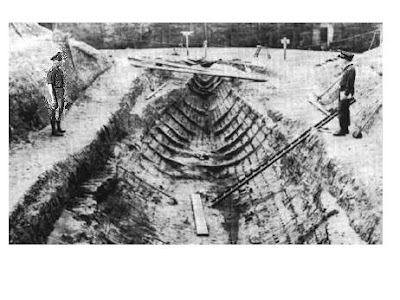.

"Scattered Heritage": In August 1805 after the defeat of the British fleet at the
Battle of Cape Finisterre there was nothing to stop the
French invasion of England. A brilliant tactician, Napoleon had achieved this and established a new government by the end of December. Among other things this made many art collections available for appropriation and removal to swell the encyclopedic collections of the Louvre, founded as a public museum in the 1790s. There the collected artworks from the areas of Napoleon's conquests (Italy 1796-7, Egypt 1798- 1801 and now the British Isles) were to form a permanent memorial to the pre-eminent position of France and its Emperor.

The extensive art collection of the British royal family built up by collector kings such as Charles I and also George III fell into French hands in the first weeks of the invasion when the troops stormed and then occupied several royal residences to apprehend the King who had gone into hiding.

George was finally taken and his agreement to surrender his art collections as a personal gift to the Emperor was one of the conditions of him being reinstituted as colonial governor. Many of the nobility were not so lucky, their houses were sacked and fine furniture, paintings and sculptures seized and sold off at auction.

Collections of financiers like
John Julius Angerstein disappeared the same way and the French seized most of the parts of the
Orleans Collection which had been taken from France to London a decade earlier. Another loss was the
Townley collection which the British Museum was attempting to purchase at the time of the invasion.
Most tragic of all however was the looting of the British Museum itself , the officers stood by as French soldiery broke into the galleries and storerooms and sacked and smashed what they could not take away. The nation lost the entire collection of
Sir William Hamilton and many other antiquities, illuminated manuscripts and printed works and other artworks.

On the restoration of sovereignty a number of items returned to Britain, but this is only a small percent of that which was destroyed or taken away and sold off after 1805. In particular the items which the King had personally given to the Emperor were not returned by the French government and to this day remain as the core of the Louvre collection which thus contains most of the extant portraits of the Tudor and Stuart monarchs and their families and associates by
Holbein,
Anthony van Dyck,
Peter Lely and other painters important in the story of the development of British art, art collecting, national culture and identity.
Renewed attempts have in the past decade been made to challenge the French ownership of these artworks through the Council of Europe and the Brussels court system, but the matter is progressing very slowly. The Daily Mail newspaper has begun a campaign "Give Us Back Our Art: the Colonial Pillage Has to STOP" which is whipping up a lot of support.
Photos: Anthony van Dyck, portrait of King Charles I,
Louvre (Emperor Napoleon Bequest). Holbein the Younger, the Ambassadors, looted from Longford castle and sold in Paris (de Dinteville collection, Policy, France). Sir Joshua Reynolds 1765.
Portrait of
George Clive and his family with an Indian maid (looted from Clive House, now in Munich, Germany), John Julius Angerstein,
painted by
Thomas Lawrence ca. 1790.




































